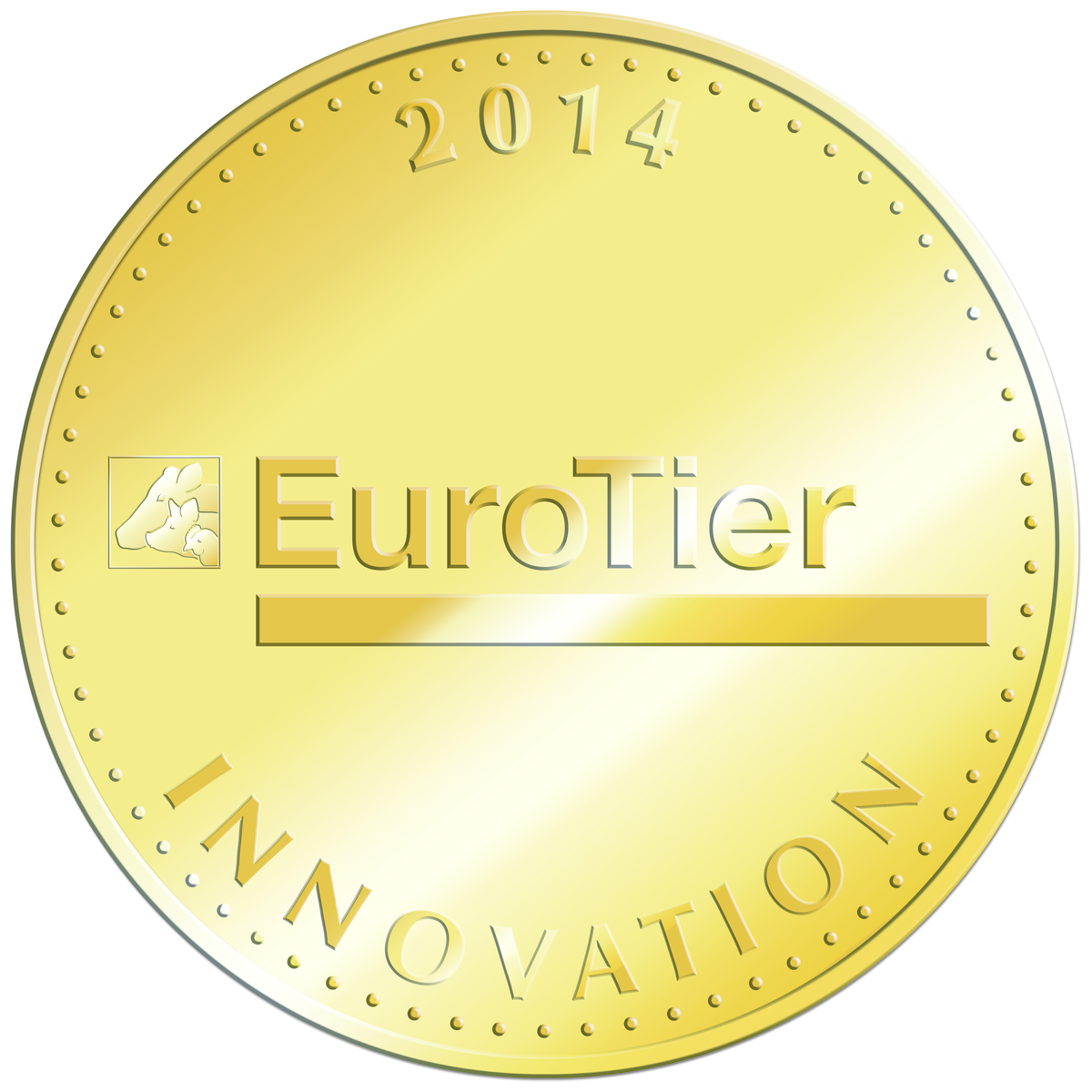Big Dutchman PEF-system wins EuroTier gold medal

Ahead of the EuroTier 2014, Big Dutchman has been awarded a gold medal for its PEF System innovation, which allows the whole maize plant to become digestible for pigs.
In total, the jury received information about 270 innovations, mostly in the pig and dairy sectors. In total six gold medals were awarded, and 15 silver medals. Below are listed the innovations that apply to the feed industry.
Gold Medals
Big Dutchman Pig Equipment: PEF-System
The innovative PEF-System is a system for cell breakdown of the whole maize plant for feeding pigs. The pig as a monogastric animal cannot make use of a series of possible components in the feed, as it does not possess the corresponding enzymes. Where the feed component silage maize, accounting for up to 15% of the total, is used in the feed, it is subjected to electrically pulsing fields in the PEF system. The electrical barrage opens up the cells and the cell juice emerges. This makes the complete cell digestible for the pigs. An improved crude fibre supply for the pigs taps additional positive potentials with regard to the animal health. The considerable cost advantages to be expected are supplemented by more efficient use of the agriculturally available land, as the complete maize plant can then be used.
Hall 11, Stand C23
Silver Medals
Gesellschaft für Tierernährung: Gelamin FaserGold
FaserGold is a novel fibre source for piglets, sows and finishing pigs with nutritional and dietetic benefits. FaserGold is obtained from soy hulls. These are processed in such a way with a patented physical method using pressure, temperature, moisture and mechanical treatment that for instance their water-binding capacity and their fermentability in the large intestine of pigs is influenced positively. In addition oregano oil is worked into the product. FaserGold can thus help to maintain normal digestive operations in energy-rations and improve dung consistency. In addition, positive effects on animal behaviour have been observed.
Hall 9, Stand H15
Big Dutchman Pig Equipment: Level-regulated agitator
The level-regulated agitator from Big Dutchman is an essential further development of existing agitators in feed mixing containers in which the stirring blades have so far been mounted firmly on the drive shaft. When mixing of liquid feed is started, a float makes certain that the agitator blades are covered by the medium, whether small or large quantities are being mixed, so that they stir the feed mix optimally. The agitator blade can thus be moved vertically along the drive shaft. At the same time soiling of the mixing container is reduced thanks to prevention of splashing caused by the agitator, thus distinctly increasing container hygiene. The advantages of this new agitator consequently lie above all in very homogenous feed mixing and in a distinct increase in container hygiene.
Hall 11, Stand C23
Witte Lastrup: ForceControll
The drive wheels of feed conveyor systems available on the market so far generally have rigid push cams, that exert strong radial tensile force on the chain alongside the strong axial force. The drive wheel ‘ForceControll’ has rotating cams instead of the customary rigid cams. This distinctly reduces the radial force when the wheel engages in the chain. Such a reduction of the radial force leads to distinctly reduced stress of the feed transport chain, above all in systems with long conveyor routes. The result is a longer service life of the chain. Lower maintenance and repair outlay for the feeding transport system underline the high practical relevance of this award-winning innovation.
Hall 11, Stand E56
Albert Kerbl: FixClip valve – The hygienic drinker valve with practical clip closure
The problem with calf feeding buckets is generally that the drinker valves are firmly connected to the bucket and are often very difficult to remove again. As a consequence the necessary cleaning of valves and teats is often left out, which can lead to hygiene problems. With the FixClip valve, Kerbl offers a simple and clever solution. The valve can be mounted or removed quickly and easily. This allows fast and simple routine cleaning of the feeding bucket.
Hall 13, Stand E48











